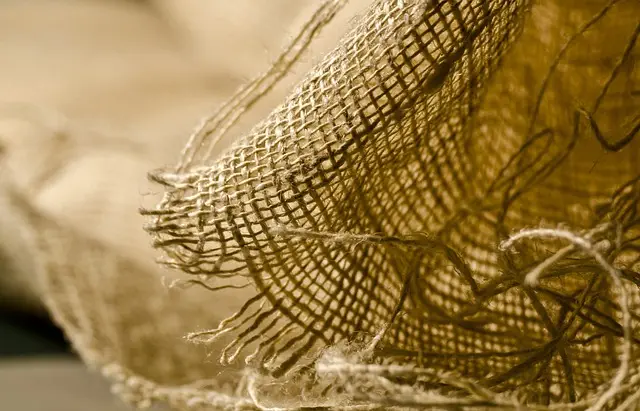Kratom, derived from the Mitragyna speciosa tree's leaves, is a natural substance that has gained attention in Idaho for its potential to alleviate muscle soreness, particularly after physical activities popular in the state's outdoor culture. Its key alkaloids, mitragynine and 7-hydroxymitragynine, are believed to interact with opioid receptors for pain relief, providing a natural alternative to synthetic drugs. However, due to its variable legal status across different Idaho counties, it's essential for residents to check local regulations before use. Safety is paramount, and users should consult healthcare professionals for safe dosing to prevent adverse effects or interactions with other substances. The American Kratom Association provides resources on both the benefits and risks associated with kratom use. For those in Idaho considering kratom as part of their wellness routine, it's crucial to prioritize product quality and origin for effective and safe muscle soreness management within a holistic health approach. Keywords: Kratom Idaho, natural pain relief, muscle soreness, wellness regimen, legal status, healthcare professional consultation.
Muscle soreness can be a persistent issue for those who push their physical limits, whether through athletic training, manual labor, or rigorous fitness routines. In Idaho, where the active lifestyle is embraced, finding effective relief from muscle soreness is not just a concern but a necessity. Kratom, a botanical supplement with alkaloids that have garnered attention for their potential therapeutic properties, has emerged as a subject of interest in this context. This article delves into the role of kratom in providing relief from muscle soreness for Idaho residents, exploring the science behind its active components, and addressing the legal and safety considerations inherent to its use. Join us as we navigate the potential benefits and challenges associated with kratom as a tool for muscle recovery in the Idaho community.
- Understanding Kratom's Role in Muscle Soreness Relief for Residents of Idaho
- The Science Behind Kratom Alkaloids and Their Impact on Muscle Recovery in Idaho Users
- Navigating the Legality and Safety Considerations of Using Kratom for Soreness in Idaho
Understanding Kratom's Role in Muscle Soreness Relief for Residents of Idaho

Kratom, a botanical derived from the leaves of Mitragyna speciosa, has garnered attention in Idaho for its potential role in alleviating muscle soreness. The residents of this outdoor-enthusiast state often engage in activities that can lead to muscular fatigue and discomfort. Kratom’s interaction with the body’s opioid receptors may provide pain relief, which can be particularly beneficial for those experiencing post-exercise soreness. Alkaloids found within kratom, such as mitragynine and 7-hydroxymitragynine, are thought to contribute to its analgesic properties. These compounds might help in easing the pain signals sent to the brain, offering a natural alternative to conventional pain medication for Idahoans seeking relief.
Incorporating kratom into one’s wellness regimen must be approached with caution and informed decision-making. Residents of Idaho interested in exploring kratom as a means of muscle soreness relief should first consult with healthcare professionals, especially given the varying legal statuses of kratom across different jurisdictions within the state. Understanding the correct dosage, potential side effects, and how it might interact with other substances is crucial for safe usage. With proper guidance and responsible use, kratom could be a valuable option for those looking to manage muscle soreness naturally in the context of Idaho’s active lifestyle.
The Science Behind Kratom Alkaloids and Their Impact on Muscle Recovery in Idaho Users

Residents of Idaho exploring natural remedies for muscle soreness may find kratom, a plant from Southeast Asia, to be a compelling option due to its unique alkaloids. Mitragynine and 7-hydroxymitragynine are the primary active compounds in kratom, which have been studied for their potential impact on muscle recovery. These alkaloids interact with the body’s opioid receptors, providing pain relief that can help mitigate the discomfort associated with muscle soreness. The analgesic properties of kratom are thought to be one of the reasons it is sought after by individuals in Idaho looking for an alternative to traditional over-the-counter or prescription pain medications.
Furthermore, preclinical studies suggest that kratom may also stimulate muscle recovery through its anti-inflammatory effects and promotion of a relaxed state, which can aid in the healing process by reducing tension and allowing for better blood circulation to affected muscles. In Idaho, where both athletic endeavors and physical labor are common, kratom’s potential benefits for muscle soreness relief have garnered attention among those seeking a holistic approach to recovery. Users in Idaho report anecdotally that consuming kratom at appropriate doses can lead to reduced muscle stiffness and accelerated post-exercise recovery, although more research is needed to fully understand its efficacy and optimal use for this purpose.
Navigating the Legality and Safety Considerations of Using Kratom for Soreness in Idaho

Kratom, a botanical derived from the leaves of Mitragyna speciosa, has garnered attention for its potential in alleviating muscle soreness. In Idaho, where legal status varies by county, individuals interested in using kratom must first navigate the local regulations. The legality of kratom in Idaho is subject to change, as some counties have enacted bans while others allow its sale and consumption within certain guidelines. It’s imperative for consumers to verify the current legal standing in their specific jurisdiction before purchasing or using kratom products. On the safety front, users should approach kratom with caution due to its psychoactive properties and potential side effects. The American Kratom Association advocates for the safe use of kratom and provides resources for those looking to understand both its benefits and risks. Users in Idaho considering kratom as a remedy for muscle soreness should be aware of the product’s origin, purity, and dosage, as these factors can significantly influence efficacy and safety. Consultation with healthcare professionals is recommended before integrating kratom into any wellness routine to ensure it aligns with personal health needs and does not interfere with other medications or treatments.
Idaho residents exploring natural remedies for muscle soreness may find kratom to be a viable option, as evidenced by its alkaloids’ effects on muscle recovery. The scientific research underscores the potential benefits of kratom for alleviating post-exercise discomfort. However, users should navigate the legality and safety aspects carefully within the state’s regulations. It’s crucial to approach kratom usage responsibly, considering both its therapeutic potential and the need for further research to fully understand its effects. Kratom’s role in muscle soreness relief is an evolving area of interest among Idaho’s wellness community, warranting continued attention and study.






